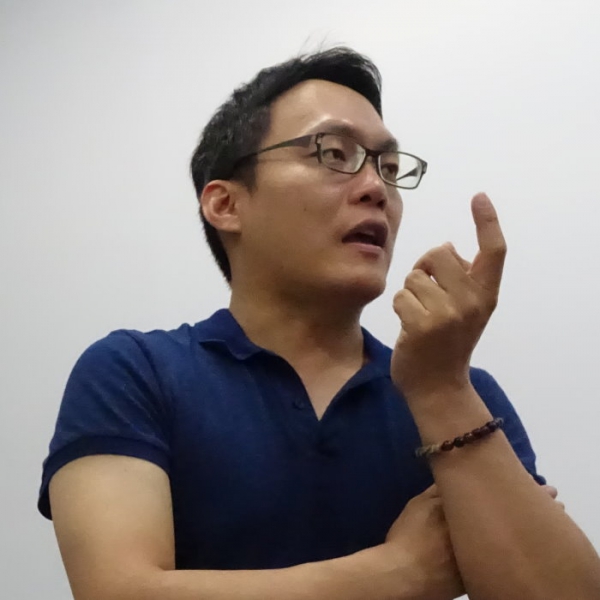Intern: Guillaume Thiriet
Affiliation: Pyrotechnic systems engineering, ENSTA Bretagne (France)
Research Topic: Development, Measurements and Simulation of a Micro-Combustor for Bio-syngas Combustion Driven Thermophovoltaic Power System
Internsihip Period: 2018/Mar./26~2018/Aug./17
The main objective of this research project was to build a reliable numerical model of a new micro-combustor embedding a platinum plate as a catalyst in the middle. The catalytic and the gas-phase combustion reactions of the mixture were investigated numerically using the CFD calculation software StarCCM+® and experimentally through a simple optical analysis. The influence of the composition of the inlet mixture was investigated. Furthermore, the platinum plate was pierced in the middle in order to investigate the influence of the gas-exchanges between the two channels. The presence of a hole on the platinum plate allows the stabilisation of the flame acting as a flame hanger.
The combustion reactions within the micro-combustor involve simultaneously homogeneous phase reactions in the channels as well as heterogeneous phase reactions over the platinum plate. Therefore, prior to build the micro-combustor numerical model, a literature review as well as a study of the main existing mechanisms was pursued in order to identify the more relevant ones as well as the appropriate set of parameters. First, the selected homogeneous phase reaction mechanism was validated reproducing the experimental results extracted from the Mrs. Ouimette Ph.D. Thesis in which different mechanisms for the / homogeneous phase combustion reactions were evaluated and compared. Then, the selected heterogeneous phase reaction mechanism was validated reproducing the experimental results extracted from the Zheng et al. (2013) paper in which the catalytic oxidation of carbon monoxide over platinum were experimentally and numerically investigated. An ultimate validation of the two previous mechanisms was carried out by reproducing the experimental results extracted from the Ghermay et al. (2011) and the Schultze et al. (2015) paper about the oxidation reaction of CO in the presence of a H2/O2/N2 mixture under different conditions of equivalence ratio and pressure. The micro-combustor numerical model was finally built using the previously defined and validated mechanisms for the homogeneous and heterogeneous phase reactions as well as the associated hypothesis and parameters. The final model as well as the mesh convergence were finally detailed whereas the influence of the inlet mixture composition was numerically investigated.
Along with this numerical study, a new micro-combustor based on the previously engineered one was designed and manufactured in order to solve the sealing defects encountered on the previous model. This new micro-combustor was then submitted to experiments in order to determine its range of application as well as its efficiency.
檔案下載
